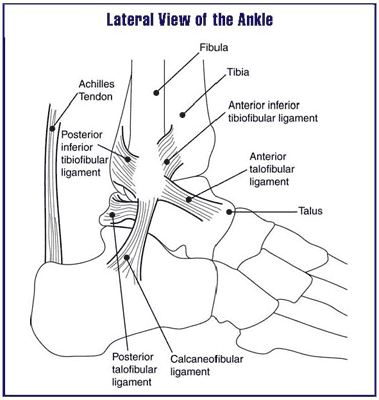
Dr. Timothy Young, a Board-Certified Foot Surgeon, Discusses Insertional Achilles Tendon Problems
Achilles insertional calcific tendinosis. This is a common problem at the insertion point of the Achilles tendon. This very often has chronic degenerative changes within the tendon which are therefore considered tendinosis. And often times there are also calcific changes or even radiographic appearing bone at the insertion of the tendon. This is a process where the Achilles tendon becomes degenerative and over time calcified is and over a longer period of time the calcification here becomes larger and can become essentially bone, that is seen on x-ray. Regarding the cause of this condition, some of it is due to overuse, it may be due to mechanical shearing and the individuals biomechanics or sport specific. A large muscular calf and/or a tight calf definitely plays into all Achilles problems. Men seem to be more prone to this than women.
Especially very large areas of calcification with men. Although women can get a condition that similar but different called a Haglund deformity. In this case it is the bone on the posterior aspect of the calcaneus that protrudes and can be aggravated by the adjacent Achilles tendon and not intratendon calcification. In the early stages this is very treatable. As time goes on and there are large areas of calcification, they can cause chronic problems. As I mentioned, in the early stages this response to some of the classic treatments for Achilles problems. That means a special brace, orthotics to decrease the workload and side to side mechanical shearing of the tendon at the insertion point, calf stretching and related treatments, and shockwave therapy. The later stages the same treatments are often still helpful, but they may not offer full relief. These are the individuals that often require surgery. The surgery involves access to the back of the Achilles insertion point with removal of the calcific portions and then reattachment of the tendon itself. The healing process for this can be similar to an Achilles rupture. There are new anchors that help to give more reliable surgical reattachment of the Achilles to the underlying bone.
If you are experiencing foot or ankle pain, give us a call at 425-391-8666 or make an appointment online today.
Especially very large areas of calcification with men. Although women can get a condition that similar but different called a Haglund deformity. In this case it is the bone on the posterior aspect of the calcaneus that protrudes and can be aggravated by the adjacent Achilles tendon and not intratendon calcification. In the early stages this is very treatable. As time goes on and there are large areas of calcification, they can cause chronic problems. As I mentioned, in the early stages this response to some of the classic treatments for Achilles problems. That means a special brace, orthotics to decrease the workload and side to side mechanical shearing of the tendon at the insertion point, calf stretching and related treatments, and shockwave therapy. The later stages the same treatments are often still helpful, but they may not offer full relief. These are the individuals that often require surgery. The surgery involves access to the back of the Achilles insertion point with removal of the calcific portions and then reattachment of the tendon itself. The healing process for this can be similar to an Achilles rupture. There are new anchors that help to give more reliable surgical reattachment of the Achilles to the underlying bone.
If you are experiencing foot or ankle pain, give us a call at 425-391-8666 or make an appointment online today.



